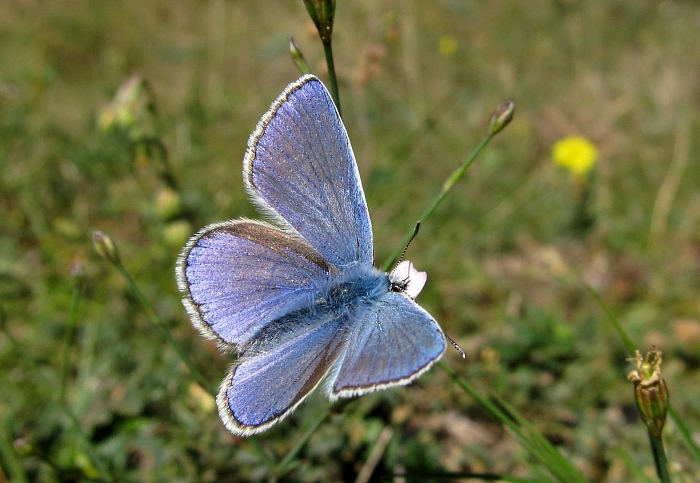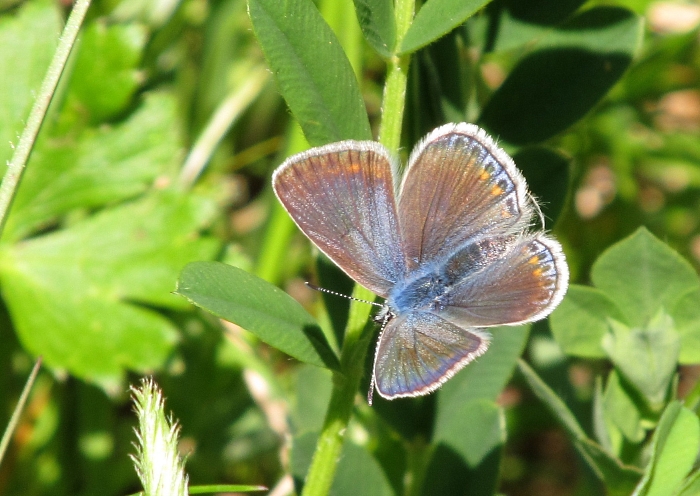
Male, Switzerland, October 2013

Male, Switzerland, April 2014

Male, Switzerland, May 2016

Male, Switzerland, May 2013

Female, Switzerland, May 2014

Female, April 2017

Mating pair, Switzerland, July 2015

Female underside, Switzerland, September 2012

Male underside, Switzerland, May 2016

Male underside, April 2012

Female, Switzerland, April 2018

Male (slightly aberrant), Switzerland, August 2015

The other side of the same male

Male, June 2011

Male, Switzerland, May 2006

Male, Switzerland, May 2006

Male, Switzerland, May 2006

Distribution
This is a widespread and often common butterfly in the southern half of Europe. It is a butterfly of flowery grassland up to moderate altitudes where its foodplant, sainfoin, grows.
Superficially, Chapman's blue
is extremely
similar to the common blue. The most obvious difference is the absence
of a cell spot on the underside of the forewing, though it should be
noted that form icarinus
of
the common blue also lacks this. More subtly, but easy enough to spot
when you
get your eye in, there is a somewhat fuzzy patch of androconial cells
extending over much of the discal region of the upperside forewing.
This is most visible from certain angles, so it is worth moving your
head around a bit to check for it. Another point to look for concerns
the black submarginal spots on the underside of the hindwing. In
Chapman's blue these are typically rather discrete, being set in a
white surround, whereas in common blue at least some of them are
contiguous with the orange inside. This characteristic is useful for
the female, too, which is otherwise very similar indeed to the female
common blue.
Chapman's blue flies in
similar places to
common blue but is more restricted because of its dependence on
sainfoin. The common blue will take a wide range of different Fabiaceae
and so is less local and generally more common. Like the common blue,
Chapman's blue flies in two broods, from April through to September,
with a low point somewhere in June. It hibernates as a small
caterpillar.